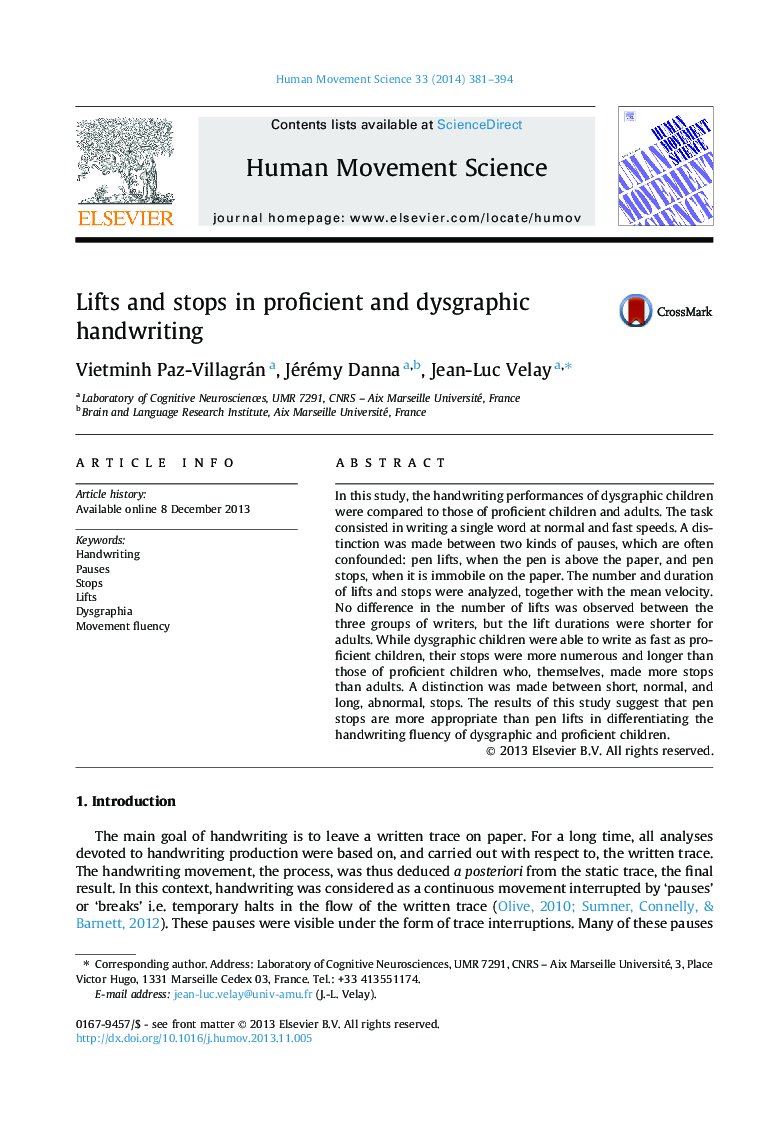| Article ID | Journal | Published Year | Pages | File Type |
|---|---|---|---|---|
| 7292617 | Human Movement Science | 2014 | 14 Pages |
Abstract
In this study, the handwriting performances of dysgraphic children were compared to those of proficient children and adults. The task consisted in writing a single word at normal and fast speeds. A distinction was made between two kinds of pauses, which are often confounded: pen lifts, when the pen is above the paper, and pen stops, when it is immobile on the paper. The number and duration of lifts and stops were analyzed, together with the mean velocity. No difference in the number of lifts was observed between the three groups of writers, but the lift durations were shorter for adults. While dysgraphic children were able to write as fast as proficient children, their stops were more numerous and longer than those of proficient children who, themselves, made more stops than adults. A distinction was made between short, normal, and long, abnormal, stops. The results of this study suggest that pen stops are more appropriate than pen lifts in differentiating the handwriting fluency of dysgraphic and proficient children.
Related Topics
Life Sciences
Neuroscience
Cognitive Neuroscience
Authors
Vietminh Paz-Villagrán, Jérémy Danna, Jean-Luc Velay,
